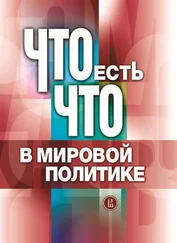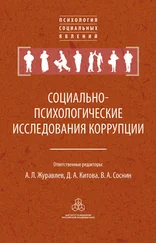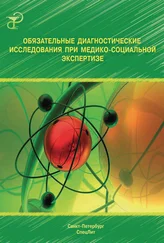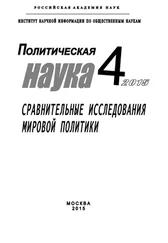Р. Эванс, «Иисус и неканонические писания», см. выше. См. также: Van Voorst, Jesus outside the New Testament , с. 102–103; Twelftree, «Jesus in Jewish Traditions», с. 295.
Crossan , Historical Jesus, с. 372; Fredriksen, Jesus of Nazareth , с. 248; Evans, «Jesus in Non-Christian Sources», с. 473–474.
Юридическая терминология здесь полностью согласуется с наименованием доноса (официального сообщения властям о преступлении) в классической литературе: ср.: Андокид 1.10; Демосфен 20.156 ( Лепт 156), Аристотель, Аф. пол 29.4; 52.1.
Evans , Jesus and His Contemporaries, с. 44–45; Van Voorst , Jesus outside the Gospels, с. 101; Theissen and Merz , Historical Jesus, с. 467; Crossan, Who Killed Jesus? Exposing the Roots of Anti-Semitism in the Gospel Story of the Death of Jesus (San Francisco: HarperSanFrancisco, 1996), с. 147–150; Sanders , Historical Figure of Jesus, с. 269.
Winter, «Josephus on Jesus and James», с. 433; idem, Trial of Jesus , с. 43, 54–56, 111–135; W. Barnes Tatum, In Quest of Jesus (2 nded.; Nashville: Abingdon, 1999), с. 221–222; Sanders , Historical Figure of Jesus, с. 273–274; Haim Cohn, The Trial and Death of Jesus (New York: Harper & Row, 1971), с. 9–15.
Об этом см.: Brown, Death of the Messiah, 1:383–397.
Theissen and Merz , Historical Jesus, с. 67, 74; Meier, Marginal Jew , 1:64–65.
Meier, Marginal Jew , 1:68.
Там же, 1:76, прим. 19.
Dunkerley , Beyond the Gospels , с. 34; совершенно нейтральное прочтение: Van Voorst, Jesus outside the New Testament , с. 95; Baras, « Testimonium Flavianum », с. 308, 313; idem, « Testimonium Flavianum and Martyrdom of James», с. 338–342.
Crossan , Who Killed Jesus? с. 7.
Пеллетье противопоставляет это описание описанию чудес Илии, которые Иосиф прямо приписывает Богу («Flavius Josèphe sur Jésus», с. 189).
Pharr, «Testimony of Josephus to Christianity», с. 137–147; Bammel, «A New Variant Form of the Testimonium Flavianum », ExpTim 85 (1974): 145–147; idem, «Zum Testimonium Flavianum », с. 9–22; Bell, «Josephus the Satirist», с. 16–22; Stanton, Gospels and Jesus , с. 150; Smith , Jesus the Magician , с. 45–46; Evans, «Jesus in Non-Canonical Sources», с. 470–471; Merejkowski , Jesus the Unknown , с. 36; Bruce , Jesus and Christian Origins, с. 38; Thackeray , Josephus , с. 138; Reinach, «Josèph sur Jésus», с. 1–18; Pines , Arabic Version , с. 65–75; Twelftree, «Jesus in Jewish Traditions», с. 296–297; Brandon , Jesus and the Zealots, с. 361–362; Eisler, ΙΗΣΟΥΣ ΒΑΣΙΛΕΥΣ, 1:38–88.
Klausner, Jesus of Nazareth , с. 57; Vermes, «Jesus Notice», с. 98; Powell, Jesus as Figure in History , с. 33; Setzer, Jewish Responses , с. 107; Dubarle, «Témoignage de Josèphe sur Jésus», с. 55; Feuillet, «Anciens historiens profanes», с. 150.
Eisler, ΙΗΣΟΥΣ ΒΑΣΙΛΕΥΣ, 1:52–55, 62–64; Brandon, Jesus and the Zealots , с. 362–364; Twelftree, «Jesus in Jewish Traditions», с. 304–305.
Bammel, «Zum Testimonium Flavianum », с. 9–22; idem, «New Variant Form», с. 145–147.
Eisler, ΙΗΣΟΥΣ ΒΑΣΙΛΕΥΣ, 1:37–39. С этим спорит Эванс (Evans, Jesus and His Contemporaries, с. 79).
Brandon , Jesus and the Zealots, с. 362–363.
По мнению Теккерея, это выражение принадлежит помощнику Иосифа, принадлежавшему к школе Фукидида (Josephus, с. 141, 144–45); см.: Eisler, ΙΗΣΟΥΣ ΒΑΣΙΛΕΥΣ, 1:40.
Reinach, «Josèphe sur Jésus», с. 9. Пеллетье, на мой взгляд, справедливо отвергает такое прочтение («Flavius Josèphe sur Jésus», с. 188). См.: в приложении к этой статье мои замечания об использовании Иосифом этого греческого прилагательного – как правило, в положительном контексте, при описании чудес и пророчеств.
Bammel, «Zum Testimonium Flavianum », с. 18–21.
См. изображение мудрецов египетских ( И. Д. II, 13.3; Пр. Ап 1.236; ср.: 1.256, 2.140), вавилонских ( И. Д. X, 10.3) и греческих ( Пр. Ап 2.168). Важнее всего, см.: характеристики Моисея ( И. В. III, 8.5), Зоровавеля ( И. Д. XI, 1.3), Соломона ( И. Д. VIII, 2.7; Пр. Ап 1.111) и особенно Даниила ( И. Д. X, 10.4, 11.2, 11.3).
R. Laqueur, Der jüdische Historiker Flavius Josephus (Giessen: Munchow, 1920), с. 274–277.
Klausner, Jesus of Nazareth , с. 57. Аналогично и Баррет отмечает, что в описаниях Иоанна Крестителя и Иисуса у Иосифа проявляется «цивилизующая» тенденция – стремление сделать их более презентабельными в глазах греческой и римской аудитории (Klausner, New Testament Background , с. 278).
Klausner, Jesus of Nazareth , с. 59–60.
Зетцер отмечает здесь у Иосифа «ноты сострадания» (Setzer, Jewish Responses , с. 108).
Сравнение Иоанна и Иакова см.: Theissen and Merz , Historical Jesus, с. 73–74; Thackeray , Josephus , с. 131.
Об этих двух учителях см.: C. D. Elledge, Life after Death in Early Judaism: The Evidence of Josephus (WUNT 2/208; Tübingen: Mohr Siebeck, 2006), с. 64–67; Bernd Schröder, Die ‘väterlichen Gesetze’: Flavius Josephus als Vermittler von Halachah an Griechen und Römer (TSAJ 53; Tübingen: Mohr Siebeck, 1996), с. 35–36; Martin Hengel, The Zealots: Investigations into the Jewish Freedom Movement in the Period from Herod I until 70 A.D. (trans. D. Smith; Edinburgh: T&T Clark, 1989), с. 258–259; Richard A. Horsley and John S. Hanson, Bandits, Prophets, and Messiahs: Popular Movements in the Time of Jesus (NVBS; Minneapolis: Winston, 1985), с. 182–185; Cecil Roth, «An Ordinance against Images in Jerusalem, A.D. 66», HTR 44 (1956): 169–177; Julius Guttmann, «The ‘Second Commandment’ and the Image in Judaism», HUCA 32 (1961): 161–174.
Читать дальше
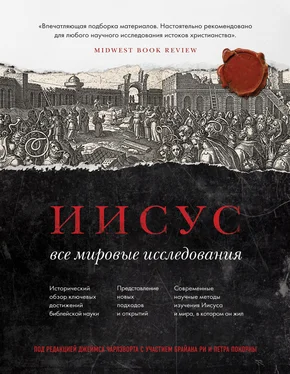
![Коллектив авторов - Что мы думаем о машинах, которые думают [Ведущие мировые ученые об искусственном интеллекте]](/books/31211/kollektiv-avtorov-chto-my-dumaem-o-mashinah-kotorye-thumb.webp)
